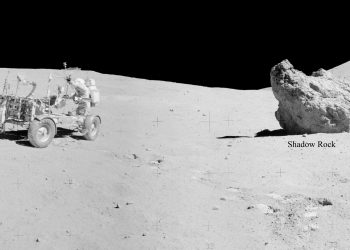In a groundbreaking cross-application of technology, an algorithm initially developed for NASA’s Perseverance Rover on Mars is now opening up new possibilities for scientists on Earth. This cutting-edge tool, known as Nested Fusion, holds the potential to revolutionize how researchers analyze everything from ancient Martian landscapes to pressing climate challenges on our own planet. Developed by Austin P. Wright, a Ph.D. student at Georgia Tech, this algorithm exemplifies the increasingly blurred lines between space science and Earth’s environmental studies.
From Mars to Earth: The Wider Impact of Nested Fusion
Originally designed to enhance NASA’s Mars 2020 mission, Nested Fusion was intended to help scientists scan and interpret the Martian surface for clues of ancient life. However, its utility is proving to be much broader. Wright’s creation is now being applied to vastly different fields—ranging from predicting hurricanes and wildfires to understanding biodiversity shifts—all thanks to its ability to merge complex, overlapping datasets into a cohesive, high-resolution visual model.
This technique represents a leap forward in how scientists interpret large quantities of data. It allows researchers to visualize and make sense of information at different resolutions, something previously difficult and time-consuming. What used to require weeks of analysis from multiple teams of experts, now, through Nested Fusion, can be achieved in a matter of hours by a single scientist.
Wright’s algorithm debuted at the prestigious 2024 International Conference on Knowledge Discovery and Data Mining (KDD), where it earned runner-up status for Best Paper. The significance of this innovation is already being felt far beyond the field of planetary exploration, as experts realize its value for Earth-based applications.
A Game Changer for Environmental Monitoring
Perhaps one of the most exciting aspects of Nested Fusion lies in its potential to improve environmental and climate monitoring. Wright and his collaborators are adapting the tool to tackle some of the most pressing issues of our time—extreme weather events, climate change, and ecosystem degradation.
By combining satellite imagery with climate data and other environmental datasets, the algorithm enables researchers to track shifting weather patterns, rising temperatures, and even the migration of plant and animal species. Hurricanes, for example, could be better forecasted as Nested Fusion simplifies the complex task of correlating multiple data points—wind speed, sea surface temperatures, and atmospheric pressure—to provide a more accurate prediction model.
This capability is critical in today’s world, where extreme weather events are becoming more frequent and severe. Wildfires, floods, and droughts disrupt millions of lives, and more accurate predictions could save both lives and resources. Nested Fusion stands to transform how early-warning systems for such events are developed, delivering insights at a speed previously unattainable.
The Science Behind Nested Fusion
At its core, Nested Fusion integrates datasets from multiple instruments, each providing different resolutions and types of information. In its original Martian context, it was designed to overcome the challenges posed by NASA’s Perseverance Rover’s Planetary Instrument for X-ray Lithochemistry (PIXL). PIXL uses two tools: an X-ray Fluorescence (XRF) Spectrometer that captures elemental compositions of Martian rocks, and a Multi-Context Camera (MCC) that provides visual details of the surface. Each dataset has a different resolution, making it difficult to cross-reference and analyze the information together.
Wright’s algorithm overcomes this challenge by merging these datasets into a single, high-resolution image. As a result, scientists can now quickly interpret the Martian surface’s elemental composition while simultaneously considering its physical features. What used to require collaboration among multiple teams—each focused on different instruments—can now be handled by a single researcher within hours.
While this advancement is a major leap for Martian research, it’s also a demonstration of how data science is reshaping fields like geology, chemistry, and even biology. Wright’s success with NASA underscores the far-reaching implications of this technology, now being embraced by earth scientists.
Bringing Machine Learning Down to Earth
The transition of Nested Fusion from Martian science to Earth-based environmental studies is already in motion. Scientists are starting to apply the algorithm to study climate data, biodiversity changes, and the movement of plant and animal species across the globe.
“Data analysis has always been a lengthy, intricate process,” Wright explains. “It used to take researchers considerable time to discover meaningful patterns in the data. But Nested Fusion offers a way to see these trends far earlier, opening up new possibilities for hypothesis generation and model building.”
This means that climate scientists, for instance, can now analyze real-time satellite images in tandem with environmental biomarkers to predict large-scale ecological shifts. The implications are staggering—early detection of droughts, more precise tracking of deforestation, and even better models for predicting the spread of diseases tied to climate change, such as malaria or dengue fever.
Looking Ahead: The Future of Nested Fusion
Wright’s innovation is just the beginning. With its applications already extending beyond space exploration, Nested Fusion could be instrumental in addressing some of the most urgent challenges facing humanity today. Its power lies in its ability to visualize data in a way that was once unimaginable. As scientists continue to push the boundaries of this technology, new uses are likely to emerge, further cementing its place in fields from astronomy to environmental science.
The algorithm has proven its worth on Mars, but its real legacy may lie in how it helps us better understand our own planet. As our ability to predict and prepare for natural disasters improves, the impact of this seemingly small innovation could be life-saving.
What remains exciting is the prospect of Nested Fusion’s continued evolution. Could it become the backbone of Earth’s future environmental monitoring systems? And will its predictive capabilities help nations better respond to the growing challenges of climate change? Only time will tell, but one thing is certain: Nested Fusion has only begun to unlock its full potential.











